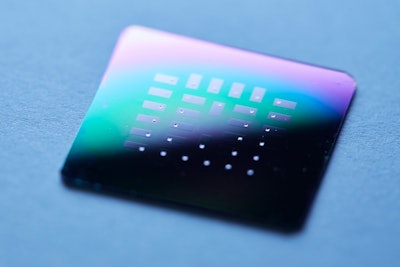When we eat, our bodies absorb sugar and store it to power our cells. So why couldn’t glucose also be used to power implants in our bodies? According to a recent MIT News article, engineers at MIT and the Technical University of Munich are betting on it. The team developed a new kind of glucose fuel cell that converts glucose into electricity.
The tiny device’s thickness is about 1% the diameter of a human hair, and generates roughly 43 microwatts per square cm of electricity (the highest glucose fuel cell power density to date). The fuel cell is made of ceramic, which retains electrochemical properties at high temperatures, and can withstand temps up to 600 degrees Celsius. This means it can hold up to high-temperature sterilization required for all implantable devices.
The researchers believe the technology could be made into ultrathin films that envelop implants to power them passively with the body’s glucose supply.























